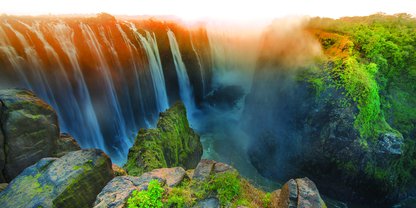Written by Mission Talent Team
The Legacy Landscapes Fund – a new approach to safeguarding biodiversity

As the global economy slows down, conservation faces a huge challenge. Many protected areas are funded by tourism, which has trickled to a halt this year. Wildlife safaris in Africa, for example, have seen a 75% decrease in income — at the same time, government conservation budgets are also being diverted.
International aid, which has filled in the gaps in the past, has become unpredictable. “The current pandemic and its aftermath could undermine decades of conservation effort,” says lead author Mark Hockings, vice-chair of the IUCN’s World Commission on Protected Areas. How to ensure sustainable financing for conservation and biodiversity has become an urgent question competing among many other global crises.
For the Legacy Landscapes Fund (LLF), partnerships are the answer. A joint initiative of governments and private foundations, its partners include BMZ, KfW, Agence Française de Développement, the Campaign for Nature, Frankfurt Zoological Society, the IUCN, the UNESCO World Heritage Centre and WWF. This funding model has previously proven successful with the Blue Action Fund, the Caucasus Nature Fund and the Prespa Ohrid Nature Trust.
The LLF will focus on safeguarding outstanding biodiversity areas, or legacy landscapes, in the Global South. Currently, only 13% of the world’s annual spending on protected areas is allocated in this region, while most of the largest legacy landscapes are located there. These include for example the Namib-Naukluft National Park in Namibia; the Tumucumaque National Park in Brazil and the Kavango Zambezi Transfrontier Conservation Area in Zambia, Botswana, Namibia, Zimbabwe and Angola. Many of these outstanding legacy landscapes face a variety of complex challenges — most prominently, balancing conservation needs with the need for social and economic development.
The LLF seeks to obtain significant and sustained funding, both from public and philanthropic sources, with the aim of building a network of the world’s most important legacy landscapes. The Fund will finance long-lasting partnerships between experienced NGOs and protected areas authorities as well as local communities in order to efficiently conserve and manage protected areas and their buffer zones. These local partnerships aim to improve the conservation of biological diversity, while at the same time securing the rights of the local populations.
This unique design makes the creation of the LLF historic and ambitious, and the fund plans to operate as a learning organisation and share its findings with the wider conservation community. Its official launch and strategy roll-out still lies ahead, but with the core pieces of the partnership coming together, and protection of biodiversity as urgent as ever, there is no time to waste.